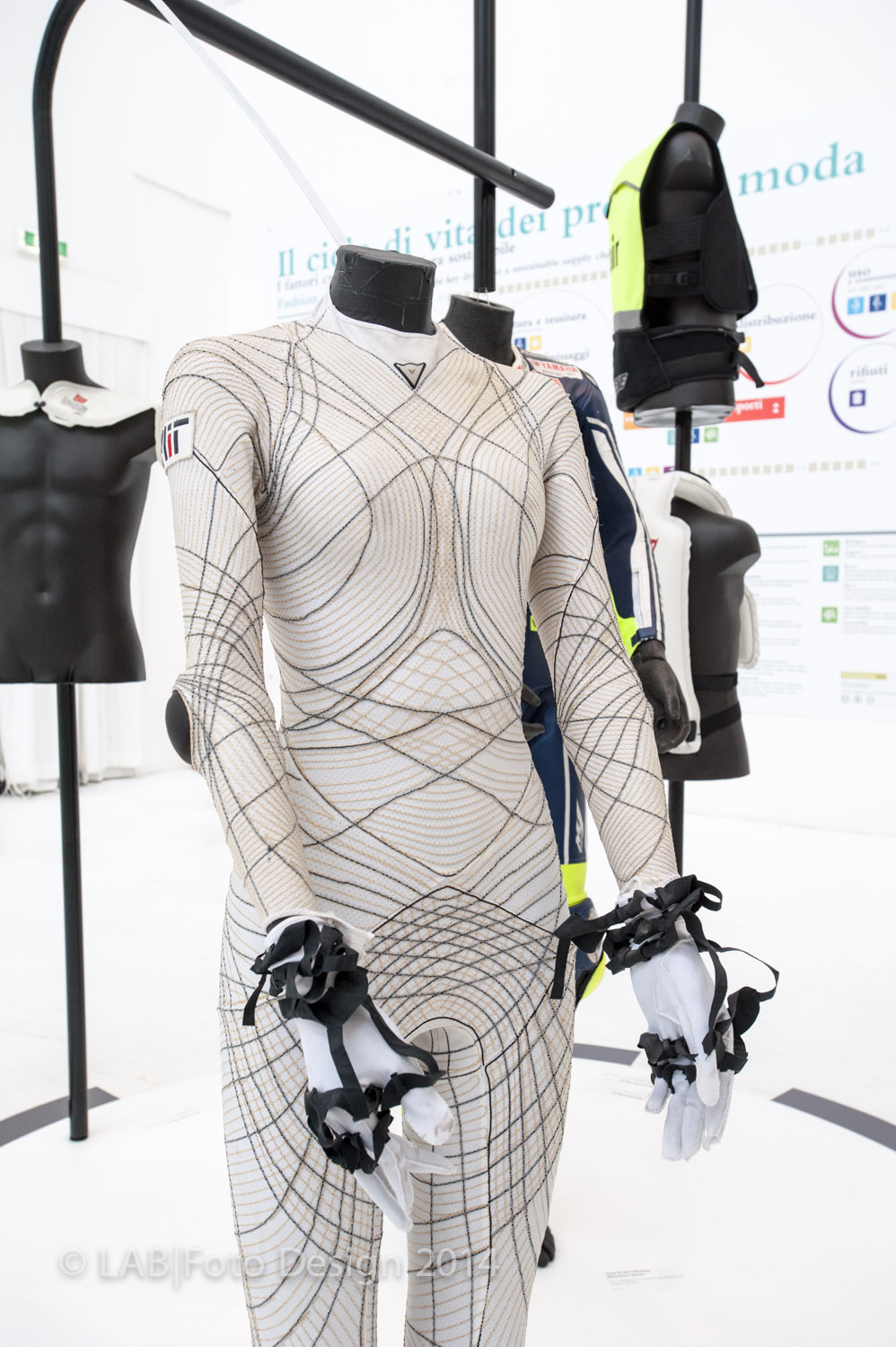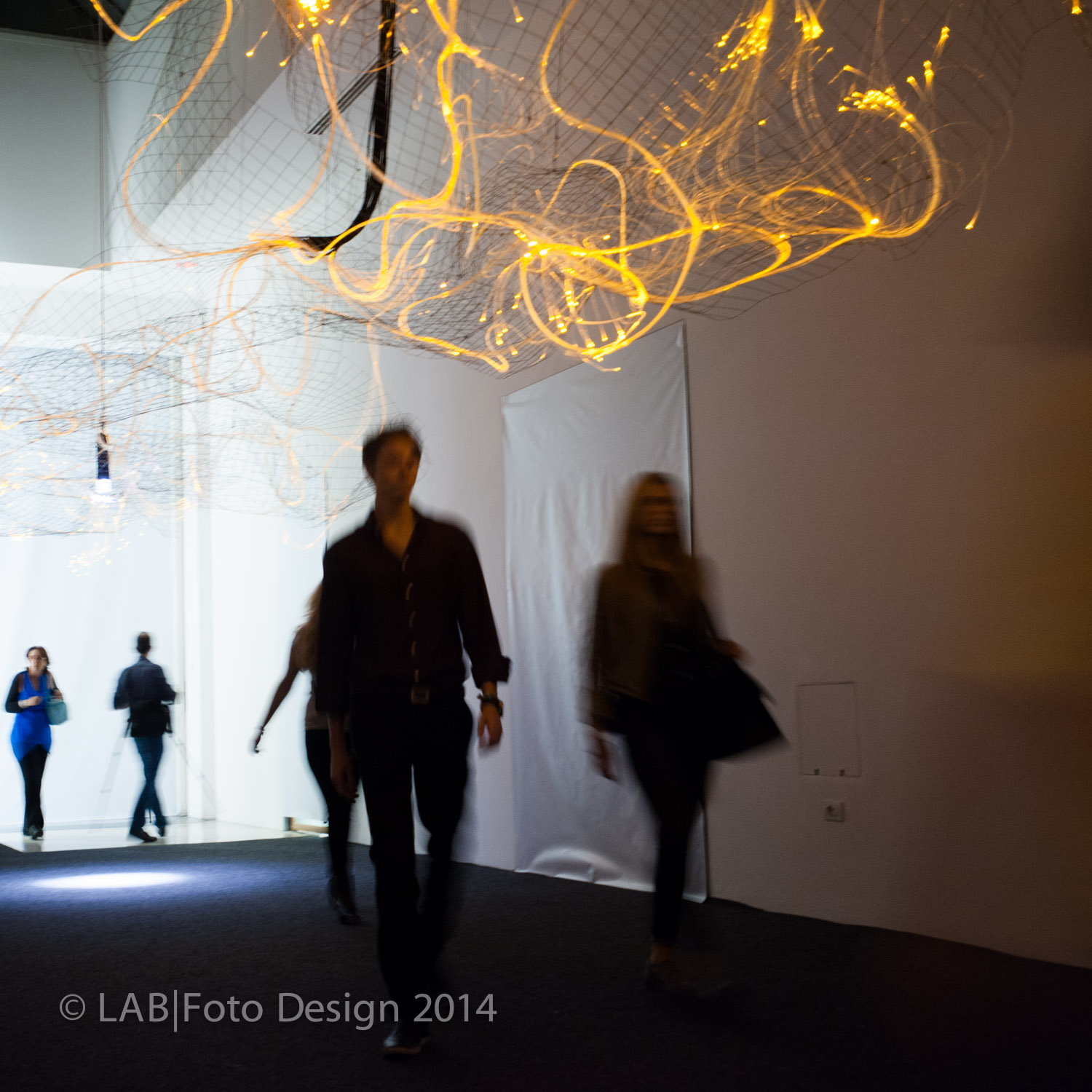At the Milan Triennale, textiles and the industry that produces them are the protagonists of a beautiful exhibition that tells the story, the history and the future of the Made in Italy. This is done through what we might call the foundation of clothing, furniture and architectural design: fabric. In this show, weave, weft, warp, yarn and knots are at the heart of a philosophy of fashion and embodiment.
There is a lot of talk lately of the future of the Made in Italy, especially in relation to fashion and the luxury market. Within this context, far too little attention is dedicated to the world of textiles, a sector that in Italy has a long history of excellence and knowhow and that harks back to the medieval towns in Northern and Southern Italy.
The merit of this exhibition, which covers a great deal of space at the Triennale, is that of combining technological innovation with the long experience of experimentation of the textile sector in the various industrial districts. The textile industry is certainly one of the most successful and most open to a constructive dialogue with creativity, to the marriage of science and art, and to the establishment of communication bridges among the fields that sometimes are erroneously considered separate, such as those of art and industry.
 Eleonora Fiorani, a cognitivist philosopher and professor from the Milan Polytechnic and the European Institute of Design, is the curator of the Milan Triennale Fashion and also co-curator of the show. She explains that one of the aims of the exhibit to communicate to visitors and experts alike is the key role of the textile industry in Italy. In particular, some of the brands represented, such as Candiani for Jeans or Dainese, a world renowned leading protection and security company, which besides producing motorbike suits is currently engaged with an MIT Lab in Boston to make the astronauts’ suits for their future visit to the planet Mars in 2030.
Eleonora Fiorani, a cognitivist philosopher and professor from the Milan Polytechnic and the European Institute of Design, is the curator of the Milan Triennale Fashion and also co-curator of the show. She explains that one of the aims of the exhibit to communicate to visitors and experts alike is the key role of the textile industry in Italy. In particular, some of the brands represented, such as Candiani for Jeans or Dainese, a world renowned leading protection and security company, which besides producing motorbike suits is currently engaged with an MIT Lab in Boston to make the astronauts’ suits for their future visit to the planet Mars in 2030.
The exhibit’s brilliant installation by Peter Bottazzi (Display Design) and Rossana Galdi (graphic design) is a real joy, an explosion of ideas and content that also involves the visitor at the emotional level. This journey into textiles and its practices and poetics is extremely precise and follows a very clear order that informs the visitor of a reality that inhabits the body and as such may be taken for granted.
This clarity of intents, topics and richness of images is achieved by focusing on a number of fundamental ideas. The key concept is contained in the text accompanying the show written by Fiorani when she says that: textiles are the skin of cultures, of its bodies and furnishings. They express the intimate relationship between artifice and nature and thus becoming living bodies that move to the fast rhythms of technology, that same technology that has produced them. The techniques and technologies elaborated for the production of textiles are like clothing “an interface with the world, a multiplying of the body, whether those of human beings or of things and environments both natural and artificial” (Fiorani). To corroborate this thought in the show, each company has its own installation, a sort of a micro-universe that explains where it is located in Italy, while at the same time explaining the processes of its research in science and technology to achieve its results.
 In fact, another important element of the show is to establish a local mapping of the production of the Made in Italy. Some of the objects on display show the technological potential of textiles such as the laser cut, tradition and digital printing, tridimensional textiles, and material for comfort for the well being and adaptability to different climatic conditions etc. Textiles are here presented to open up their perception, their sensorial potential and the possibility of sustainable fabrics. The future of textiles, however, is here presented with the long Italian history of this industry. Books and documents from the Biblioteca Tremelloni Archive and others are also on display.
In fact, another important element of the show is to establish a local mapping of the production of the Made in Italy. Some of the objects on display show the technological potential of textiles such as the laser cut, tradition and digital printing, tridimensional textiles, and material for comfort for the well being and adaptability to different climatic conditions etc. Textiles are here presented to open up their perception, their sensorial potential and the possibility of sustainable fabrics. The future of textiles, however, is here presented with the long Italian history of this industry. Books and documents from the Biblioteca Tremelloni Archive and others are also on display.
Most importantly, this history is connected with processes of production and their different uses. Along with spatial and futurist suits, we find clothing and objects for interior design and furnishing so that the visitor is informed of the story that leads from yarn to end product.
 There is, however, another important phase in this cognitive mapping process. And this has something to do with the sensorial and aesthetic dimension, which could at first seem vague in the complex map of being in the world. These are the artists’ installations that have interpreted and translated into art the everyday meanings of textiles and their uses. Note, in fact, the Deleuzian inspirations of Ilaria Beretta (Accademia di Belle Arti, Brera and Master in New Media Art Design at the Milan Polytechnic). Her installation called Mille Piani (One Thousand Plateaux) is a stratification of fabrics and fibers from carbon and glass. In her layering of fragments of various textiles is an attempt to map a mode of thinking that does not follow a linear trajectory, but moves forward through contiguities, heterogeneities, breaks and reconnections. Beretta’s work traces a cartography of being that is situated in a material and immaterial multiplicity. The installation Nessie BJ by Afran (Francis Nathan Abramba), who is originally from Camerun but who now lives in the Como area, continues this exploration of textiles. His work is symptomatic of a diasporic identity that materializes itself in the jeans, the fabric he has used to build the big and imposing sculpture of a sea monster, (Photo) a totemic and mysterious figure that covers geographic, imaginary and global spaces. In this way, Afran’s project has a migrant nature in a fabric such as the jeans (whose history and uses are global), but also in the migrant nature of our own contemporaneity, of our thoughts and bodies always moving through real and imaginary spaces.
There is, however, another important phase in this cognitive mapping process. And this has something to do with the sensorial and aesthetic dimension, which could at first seem vague in the complex map of being in the world. These are the artists’ installations that have interpreted and translated into art the everyday meanings of textiles and their uses. Note, in fact, the Deleuzian inspirations of Ilaria Beretta (Accademia di Belle Arti, Brera and Master in New Media Art Design at the Milan Polytechnic). Her installation called Mille Piani (One Thousand Plateaux) is a stratification of fabrics and fibers from carbon and glass. In her layering of fragments of various textiles is an attempt to map a mode of thinking that does not follow a linear trajectory, but moves forward through contiguities, heterogeneities, breaks and reconnections. Beretta’s work traces a cartography of being that is situated in a material and immaterial multiplicity. The installation Nessie BJ by Afran (Francis Nathan Abramba), who is originally from Camerun but who now lives in the Como area, continues this exploration of textiles. His work is symptomatic of a diasporic identity that materializes itself in the jeans, the fabric he has used to build the big and imposing sculpture of a sea monster, (Photo) a totemic and mysterious figure that covers geographic, imaginary and global spaces. In this way, Afran’s project has a migrant nature in a fabric such as the jeans (whose history and uses are global), but also in the migrant nature of our own contemporaneity, of our thoughts and bodies always moving through real and imaginary spaces.
The exhibition features a number of Italian companies in the sector: Candiani, Canepa, Dainese (also in the designer installation section), Eurojersey, Forza Giovane Art, Gavazzi, Lurex NextMaterials, RadiciGroup, Res, Slam, Stone Island, Zegna Baruffa Lane Borgosesia, and ZIP GFD. The exhibition includes some videos, which tell the story of particular textile technologies, kindly lent by INSTM, the National Interuniversity Consortium of Materials Science and Technology, AIMAT, the Italian association of materials engineering, and the Department of Chemistry at the Aldo Moro University of Bari, and LIPP, the Apulian Industrial Plasma Laboratory.
Lastly, the exhibition also includes archival materials relating to fabrics (the Gianni Bologna archive), books and magazines on textile technologies (Biblioteca Tremelloni archive) and installations by designers Nanni Strada, Carlo Rivetti and artists Deda Deda Barattini, Ivana Margherita Cerisara, Ilaria Beretta, Afran. With the collaboration of Base, Fibretec, and Texpoint, these retrace and reinterpret the world of textiles and weaving.










